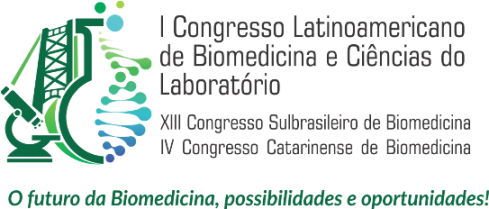Dados do Trabalho
Título
INTERAÇOES NEUROIMUNOLOGICAS NA SAUDE E NA DOENÇA.
Fundamentação/Introdução
Até recentemente o cérebro era considerado um sítio imune privilegiado, isto é, acreditava-se que o sistema imune tinha acesso restrito a este órgão. Pesquisas recentes identificaram a presença vasos linfáticos no cérebro, confirmando que células do sistema imune tem amplo acesso ao cérebro. Além da micróglia, que são os macrófagos residentes do sistema nervoso central, outras células imunes, incluindo linfócitos T, monócitos e mastócitos residem no cérebro e circulam no liquido cefalorraquidiano. Estas descobertas abriram um amplo campo de investigação a respeito das interações entre sistema nervoso e sistema imune.
Objetivos
Investigar a interação entre sistema imune e sistema nervoso no âmbito fisiológico e patológico.
Delineamento e Métodos
Trata-se de uma revisão de literatura baseada em artigos científicos publicados nas bases de dados Bireme, Pubmed, Ebsco nos últimos 10 anos (2009-2019).
Resultados
O sistema imune e o sistema nervoso estão profundamente conectados. Diversos estudos demonstram a ocorrência de alterações imunes em doenças neurológicas como autismo, esquizofrenia e depressão. Por outro lado, pesquisas mais recentes estudam a relação entre sistema imune e sistema nervoso com foco no papel fisiológico do sistema imune na regulação de funções neuronais, e demonstram que células e moléculas do sistema imune estão envolvidos na regulação de funções como memória, aprendizagem, ansiedade e comportamento social. Ainda, quando o organismo é infectado por patógenos, a ativação da resposta imune leva a uma série de alterações comportamentais, como letargia, redução da ingestão de alimentos, do perfil exploratório e da interação social. Este conjunto de alterações comportamentais é chamado de comportamento de doença ou ‘Sickness Behavior’
Conclusões/Considerações Finais
Ao reconhecer e desvendar os fenômenos celulares e moleculares envolvidos no eixo neuro-imune, nós estaremos mais perto de entender a etiologia, e consequentemente potenciais terapias para muitas doenças neurológicas.
Referências
ABBAS, A. K.; LICHTMAN, A. H.; PILLAI, S. Celular and molecular immunology. 2015.
CAREAGA, M.; MURAI, T.; BAUMAN, M. D. Maternal immune activation and autism spectrum disorder : From rodents to nonhuman and human primates. Biological Psychiatry, v. 81, n. 5, p. 1–28, 2016.
DANTZER, R. Cytokine, Sickness Behaviour, and Depression. Immunology and allergy clinics of North America, v. 29, n. 2, p. 247–264, 2009.
DERECKI, N. C. et al. Regulation of learning and memory by meningeal immunity: a key role for IL-4. J Exp Med, v. 207, n. 5, p. 1067–1080, 2010.
ESTES, M. L.; MCALLISTER, A. K. Immune mediators in the brain and peripheral tissues in autism spectrum disorder. Nat Rev Neurosci, v. 16, n. 8, p. 469–486, 2015.
FILIANO, A. J. et al. Unexpected role of interferon-γ in regulating neuronal connectivity and social behaviour. Nature, v. 535, n. 7612, p. 425–429, 2016.
GIBNEY, S. M.; DREXHAGE, H. A. Evidence for a dysregulated immune system in the etiology of psychiatric disorders. Journal of Neuroimmune Pharmacology, v. 8, n. 4, p. 900–920, 2013.
GROSSBERG, A. et al. Inflamation-induced lethargy is mediated by supression of orexin neuron activity. J neurosci., v. 31, n. 31, p. 11376–11386, 2011.
HABA, R. et al. Lipopolysaccharide affects exploratory behaviors toward novel objects by impairing cognition and/or motivation in mice: Possible role of activation of the central amygdala. Behavioural Brain Research, v. 228, n. 2, p. 423–431, 2012.
HENNESSY, M. B.; TERRENCE, D.; SCHILLER, M. Sociality and Sickness: Have Cytokines Evolved to Serve Social Functions beyond Times of Pathogen Exposure? Brain Behav Immun, v. 37, p. 15–20, 2014.
KENNEDY, D. P.; ADOLPHS, R. The social brain in psychiatric and neurological disorders Daniel. Trends in cognitive sciences, v. 16, n. 11, p. 559–572, 2012.
KESTEREN, C. VAN et al. Immune involvement in the pathogenesis of schizophrenia : a meta-analysis on postmortem brain studies. Transl Psychiatry, v. 7, n. 3, p. e1075-11, 2017.
KIPNIS, J. Immune system: The “seventh sense”. The Journal of Experimental Medicine, p. jem.20172295, 2018.
KIRSTEN, K. et al. First description of behavior and immune system relationship in fish. Scientific Reports, v. 8, n. 1, p. 1–7, 2018.
KIRSTEN, K. S. et al. Reduced expression of selective immune-related genes in silver catfish (Rhamdia quelen) monocytes exposed to atrazine. Fish and Shellfish Immunology, v. 64, p. 78–83, 2017.
LOUVEAU, A. et al. Structural and functional features of central nervous system lymphatic vessels. Nature, v. 523, n. 7560, p. 337–41, 2015.
MÜLLER, N.; SCHWARZ, M. J. Immune System and Schizophrenia. Current immunology reviews, v. 6, n. 3, p. 213–220, 2010.
OGŁODEK, E. et al. The role of the neuroendocrine and immune systems in the pathogenesis of depression. Pharmacological Reports, v. 66, n. 5, p. 776–781, 2014.
RAKUS, K. et al. Conserved Fever Pathways across Vertebrates: A Herpesvirus Expressed Decoy TNF-α Receptor Delays Behavioral Fever in Fish. Cell Host and Microbe, v. 21, n. 2, p. 244–253, 2017.
SNYDER-MACKLER, N. et al. Social status alters immune regulation and response to infection in macaques. Science, v. 354, n. 6315, p. 1041 LP-1045, 2016.
Palavras-chave
Sistema imune, sistema nervoso, citocinas, comportamento
Área
Tema livre
Instituições
Fasurgs - Rio Grande do Sul - Brasil
Autores
Karina Kirsten, Gessi Koakoski, Suelen Mendonça Soares, Aline Pompermaier, Leonardo José Gil Barcellos
